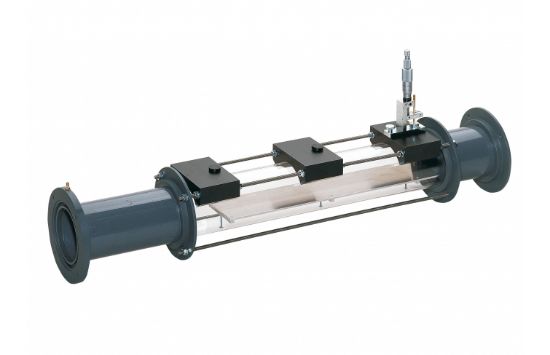The boundary layer is formed along a surface of a body in incident flow due to the adhesion of the flowing fluid, e.g. air. Internal friction in the fluid causes a change in the flow course and affects flow resistance and flow velocity. Investigations of the boundary layer provide insights that can be applied to aircraft construction or shipbuilding.
By using the experimental unit HM 220.02 in the experimental plant HM 220 it is possible to measure and study boundary layers in flows.
The flat plate is attached in the transparent pipe and subjected to longitudinal flow. In order to minimise turbulence, the leading edge of the plate is fitted with a chamfer. A vertically sliding Pitot tube is used to measure the total pressure. The total pressures can be measured at different distances to the plate surface so that the development of the boundary layer in the flow direction can be detected. An additional measuring point measures the static pressure. Both measuring points are connected to the tube manometer in HM 220. The diffenence of total and static pressure results in the dynamic pressure from which the velocity is calculated.

